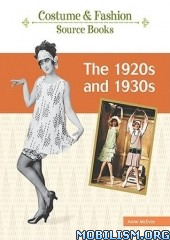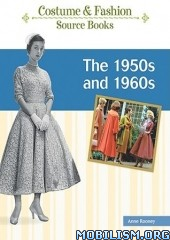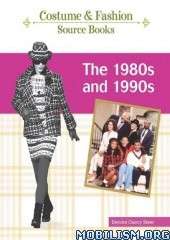Costume and Fashion Source Books by Anne McEvoy, Anne Rooney, Deirdre Clancy Steer
Requirements: PDF Reader | 25 MB
Overview: Photographs of actual performances that show characters in costume and stills from movies that show the filmmakers' interpretations of period clothes- Fact boxes that provide fascinating information about materials used, accessories worn, and clothing customs- Quotes from literature and plays that show the connotations of costume in that particular era and how clothing has indicated social status throughout the centuries- A timeline and summaries of plays, musicals, and movies that typify the era and its fashions.
Genre: Non Fiction | History > Fashion



The 1920s and 1930s by Anne McEvoy
Although the 1920s and 1930s are often lumped together as the period “between the wars,” the two decades were quite different in character and styles of dress varied greatly.
The 1920s were the Jazz Age, a period of escapism after the horrors of World War I. The younger generation, especially, turned their backs on the formality and dark, buttoned-up clothing of the previous century. On both sides of the Atlantic, life was now fun, one seemingly endless party. With Europe still recovering from the war and repaying debts, the United States took the lead in new technology. Mass manufacturing made consumer goods cheaper and more accessible. New fabrics seemed to be invented every week— rayon, known as “art silk,” nylon, and many more.
The 1950s and 1960s by Anne Rooney
In the 1950s and 1960s, fashion magazines were widely available, movies had a mainstream following, and an increasing number of homes were acquiring television sets. More people than ever before could see how the rich and famous dressed. At the same time, cheap, mass-produced clothes began to fill the stores. For the first time, ordinary people could follow fashion and easily align themselves with specific social groups and movements through their choice of clothes.
The 1980s and 1990s by Deirdre Clancy Steer
On January 20, 1981, the presidential candidate for the Republican Party, former movie actor Ronald Reagan, was sworn in as the fortieth president of the United States. Under Reagan, the country underwent a political and economic revolution characterized by deregulation (the lessening of government controls over the banking and industrial sectors) and large tax cuts. This political mood corresponded exactly to that of the then prime minister of Britain, Conservative Party leader Margaret Thatcher.
Download Instructions:
(Closed Filehost) http://uploadocean.com/xgbvviy09p61
Mirror:
https://www.up-4ever.com/3y3w3e2lytqo
Requirements: PDF Reader | 25 MB
Overview: Photographs of actual performances that show characters in costume and stills from movies that show the filmmakers' interpretations of period clothes- Fact boxes that provide fascinating information about materials used, accessories worn, and clothing customs- Quotes from literature and plays that show the connotations of costume in that particular era and how clothing has indicated social status throughout the centuries- A timeline and summaries of plays, musicals, and movies that typify the era and its fashions.
Genre: Non Fiction | History > Fashion



The 1920s and 1930s by Anne McEvoy
Although the 1920s and 1930s are often lumped together as the period “between the wars,” the two decades were quite different in character and styles of dress varied greatly.
The 1920s were the Jazz Age, a period of escapism after the horrors of World War I. The younger generation, especially, turned their backs on the formality and dark, buttoned-up clothing of the previous century. On both sides of the Atlantic, life was now fun, one seemingly endless party. With Europe still recovering from the war and repaying debts, the United States took the lead in new technology. Mass manufacturing made consumer goods cheaper and more accessible. New fabrics seemed to be invented every week— rayon, known as “art silk,” nylon, and many more.
The 1950s and 1960s by Anne Rooney
In the 1950s and 1960s, fashion magazines were widely available, movies had a mainstream following, and an increasing number of homes were acquiring television sets. More people than ever before could see how the rich and famous dressed. At the same time, cheap, mass-produced clothes began to fill the stores. For the first time, ordinary people could follow fashion and easily align themselves with specific social groups and movements through their choice of clothes.
The 1980s and 1990s by Deirdre Clancy Steer
On January 20, 1981, the presidential candidate for the Republican Party, former movie actor Ronald Reagan, was sworn in as the fortieth president of the United States. Under Reagan, the country underwent a political and economic revolution characterized by deregulation (the lessening of government controls over the banking and industrial sectors) and large tax cuts. This political mood corresponded exactly to that of the then prime minister of Britain, Conservative Party leader Margaret Thatcher.
Download Instructions:
(Closed Filehost) http://uploadocean.com/xgbvviy09p61
Mirror:
https://www.up-4ever.com/3y3w3e2lytqo